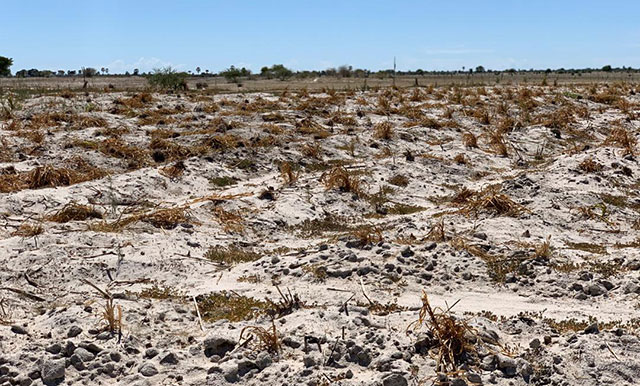Namibian farmers continue destocking livestock herds in the face of a looming drought and hitting record sales in March.
According to Simonis Storm Securities researcher Halleluya Ndimulunde, all livestock sectors experienced an increase in marketing activities in March 2024, compared to both the previous month and March of the previous year.
“A total of 141 492 cattle, sheep, goats and pigs were marketed, representing a 8,4% year-on-year increase from March 2023,” says Ndimulunde.
“Of particular note, 34 196 cattle were marketed in March 2024 — the highest monthly figure recorded since August 2023.
This total included 12 709 cattle slaughtered at domestic facilities and 21 487 exported live, predominantly to South Africa (SA),” she says.
Sheep marketing also recorded a notable rise in March 2024, particularly in live exports.
According to the Livestock and Livestock Products Board (formerly Meat Board) the shift in dynamics is attributed to drought conditions and, in part, to lower producer prices offered by local abattoirs.
In the goat sector, marketing activities increased by 7,7% year-on-year, primarily driven by growth in live exports.
“However, pigs only saw marketing activity in the slaughtering segment, with no live exports recorded. The pork ceiling price remained unchanged at N$51,03/kg in March 2024,” says Ndimulunde.
A quarterly analysis reveals that in the first quarter of 2024, a total of 318 017 livestock were marketed, compared to 259 743 activities in the same period of 2023.
“This marks the highest level of marketing activity recorded during the first quarter of any year on record.
The prolonged drought in specific regions has led farmers to prepare for a looming drought in 2024, driving the increase in livestock marketing during this period,” she says.
SA remains the primary destination for most of Namibia’s livestock exports.
In March 2024, Namibia exported 108 996 livestock to SA, predominantly sheep.
Botswana followed as the second largest destination with 269 livestock, while Angola came third with 244 heads.
During the first quarter of 2024, Namibia exported 2 936 183kg of beef, a significant 106% year-on-year increase from the prior year.
Of this, 1 277 900kg were exported to the European Union (EU), accounting for 43,5% of the total beef exports, highlighting the EU as a key market.
The United Kingdom and Norway followed as the second and third largest destinations, accounting for 27,2% and 13,7% of the exported beef, respectively.
Conversely, 976kg of beef were exported to the United States in the first quarter of 2024.
Meanwhile, early optimism about favourable rainfall for crop farmers diminished as the year progressed, with inadequate precipitation, influenced by the El Niño weather phenomenon.
“As a result, the agricultural sector anticipates another disappointing harvest season, with projections of poor crop yields,” says Ndimulunde.
Climate risk poses a formidable challenge to agriculture, especially in regions dependent on rain-fed cultivation, impacting the livelihoods of millions.
“The current El Niño event is expected to persist until at least May 2024, affecting weather patterns worldwide.
There is a high probability of it continuing, followed by neutral conditions between April and June.
The possibility of La Niña later in the year remains uncertain,” says Ndimulunde.
– matthew@namibian.com.na
Stay informed with The Namibian – your source for credible journalism. Get in-depth reporting and opinions for
only N$85 a month. Invest in journalism, invest in democracy –
Subscribe Now!






